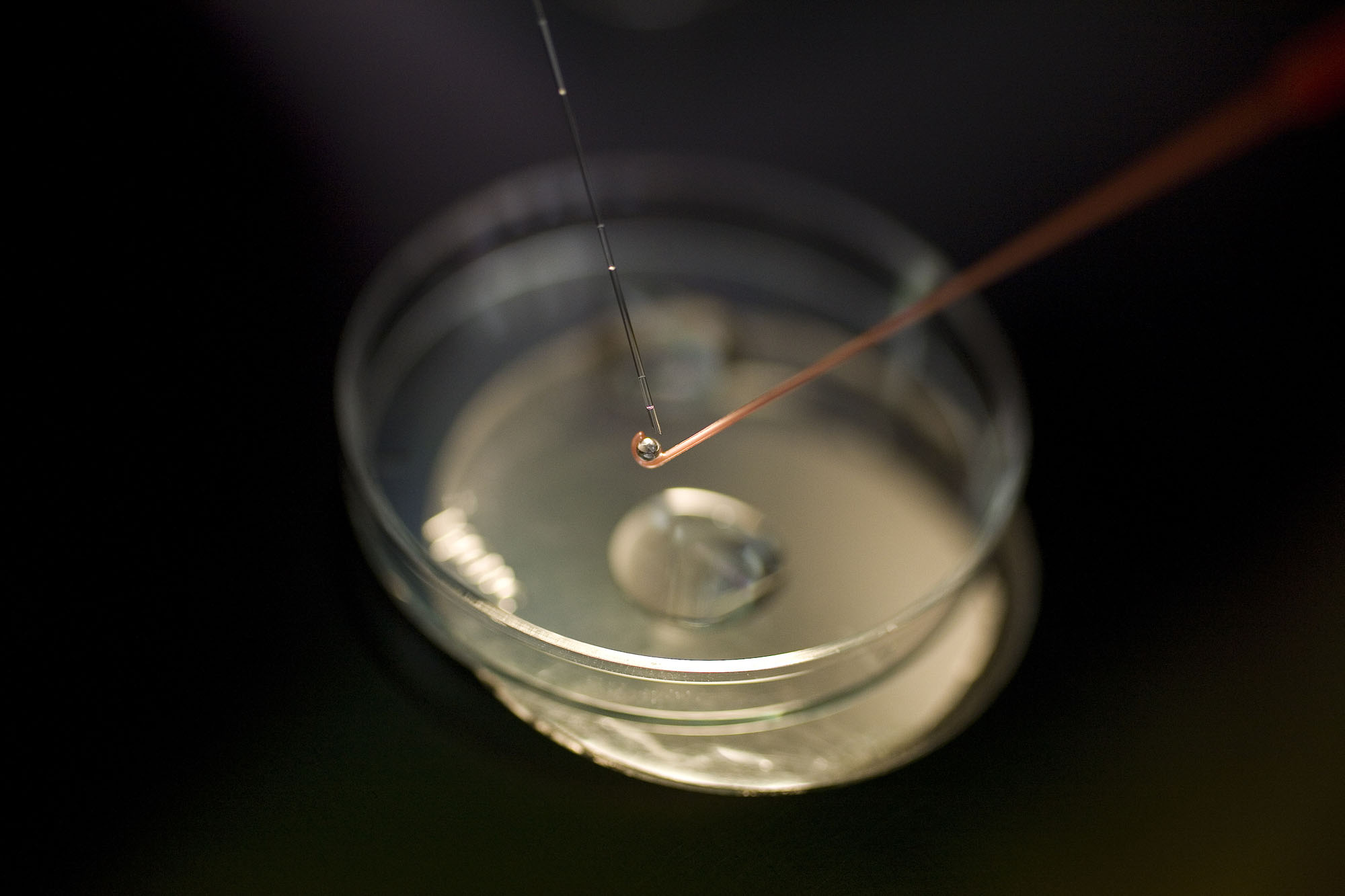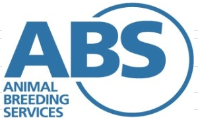Embryo Transfer
Animal Breeding Services offers a range of breeding technologies for dairy and other livestock industries. We specialize in the areas of bull breeding, stud breeding, import/export and gene discovery. Our team of specialist staff use two methods of embryo transfer.

T.V.R. / I.V.P.
Trans-Vaginal Recovery (TVR) is the name given to the non-surgical, ultrasound guided method of collecting eggs (oocytes) from the ovaries of donor cows. This technique is also referred to as Ovum Pick Up (OPU).
The donor is given an epidural. An ultrasound probe is carefully inserted into the vagina to enable the operator to visualise the ovaries on the screen. A fine suction needle, is passed through the vaginal wall and guided into each of the follicles (fluid containing egg). The oocytes are aspirated using a low vacuum pressure pump. The whole process is visualised on the screen, in order to achieve a very precise puncture without affecting the surrounding tissue on the ovary. The process takes approximately 15 minutes.
There is no special preparation of the donor required prior to the process.
In-Vitro Production (IVP) of embryos is an eight day process which occurs in an incubator in the laboratory. The process is broken down into the following steps:
The eggs are recovered from the TVR process, at the site of the collection, either at one of our centres or your farm. They are placed into a special media which helps them mature overnight to be ready for fertilisation. The tubes containing the media and eggs are placed into a portable incubator until they reach the Rukuhia IVP laboratory.
The following day, the eggs are fertilised with your nominated semen. One straw of semen, can be used on 5-8 donor cows. For the fertilisation process, the semen needs to be prepared to ensure optimal fertilisation.
The oocytes are then cultured in the incubator for a further 7 days to allow the development of embryos to the stage suitable for transfer into recipients, or vitrification.
The Advantages of TVR-IVP
- Maximises the number of progeny from high merit cows within a given time frame. It is possible in a 6 week period to produce 24 embryos (or 12 calves) from a donor.
- Allows repeat collections of oocytes from the same donor; cows can be collected twice weekly for many consecutive weeks (in contrast to MOET which can only be performed every 6 weeks). Donors can be TVR-ed more than 30 times without any issues.
- Donors are not subjected to hormonal stimulation or cycle synchronisation. This reduces the risk of subsequent fertility issues sometimes associated with MOET.
- TVR can be performed at any stage of the donor’s oestrous cycle.
- The first TVR session can be performed as little as 30 days post-calving.
- Fertile cows, after having had TVR performed, will usually get in calf without delay.
- Allows greater flexibility in the use of different sires.
- TVR can be performed on post puberty heifers, on lactating and non-lactating cattle and even on cattle up to 3 months pregnant.
In most situations we would prefer the donor cow to come on to one of our centres. The donor cow will first have to clear our entry health test requirements.
If TVR is to be carried out on your farm, basic yards are needed with a (preferably) covered head bail where cows can be securely held for collection. It is important that we have power near to the collection area. Alternatively, a rotary bail can be used. For embryology, a clean, warm room with power and a bench is required. We have a van equipped as a mobile embryology lab, which we can use where there is no suitable room or power.
TVR can be performed twice weekly and the recovered oocytes will be cultured in our modern, specially equipped laboratory at Rukuhia.
We aim to recover 7-8 oocytes per donor each time and on average 1-2 will develop to transferable embryos with an expected pregnancy rate of 50%.
M.O.E.T.
Embryo Transfer (ET) is an effective method of increasing the reproduction rate of individuals or groups of animals. This is an introduction to the Multiple Ovulation and Embryo Transfer (MOET) procedure.
All female animals are capable of producing far more eggs than they ever need over their lifetime. ET uses Follicle Stimulating Hormones (FSH) to cause the ovaries to release more than one egg in a cycle. Multiple eggs can then be fertilised inside the cow and collected non-surgically, usually 7 days after mating (or artificial insemination). These embryos can be transferred into surrogate mothers (recipients) who are at the same stage of their cycle but have not been mated.
The ET procedure can be divided into 4 areas.
1 PROGRAMMING
The donor and recipient cows must have their heats synchronised. Donors require treating with FSH, which needs to be given by injection, twice a day for four days. Recipients also need injecting with Prostaglandin. You will need to remove CIDRs and organise semen (and an AI technician). All injections are to be given into muscle i.e. neck or rump.
IMPORTANT – it is critical for good results that cows:
- Are fed well prior to and after calving – they may need preferential management
- Have a sufficient interval after calving – 6 weeks prior to start of program is minimum
- Have cycled
- Have been vet checked to ensure they are clean
Heat detection
Where cows are artificially inseminated it is essential that heats are accurately recorded. Heat detection aids will assist greatly.
On collection day donors and recipients need to be handy to the yards, which need to be secure, preferably with a covered race. The donor cow is given an epidural injection to relax her bowel. Her rear end is washed and sterilised. With their (gloved) left hand in the cow’s rectum the vet or technician guides a catheter into the vagina, through the cervix and up one side (horn) of the uterus. An inflatable cuff on the catheter is filled with air to hold the catheter in place and fluid is run into the uterine horn. When the horn is filled with fluid it is run back through the catheter and through a very fine filter. This catches the embryos. After repeating this process several times the catheter is transferred to the other horn of the uterus and the process is repeated.
After collection, the cow is released to go back to her paddock. She needs to be given a Prostaglandin injection 3 days after to get her cycling and to remove any embryos that may have been left behind.
3 EMBRYOLOGY
The filter is rinsed into a petri-dish and searched under a microscope. Once found, the embryos are counted, graded and washed. The embryos can now be loaded into transfer guns (similar to long AI pistolettes) and transferred into recipients, or frozen. Freezing takes about 2 hours with the embryos held in straws of antifreeze solution and slowly cooled to –30. They are then plunged into liquid nitrogen and stored indefinitely at –190 degrees ºC.
4 TRANSFER
Recipient cows are held in the race or head bail, given an epidural and washed. The ovaries are felt to check that the animals have cycled successfully. As with flushing, the transfer gun is inserted into the vagina, passed through the cervix and up one of the uterine horns where the embryo is deposited.
Facilities
Basic yards are needed with a covered race where cows can be securely held for programming and flushing. For embryology, a clean, warm room with power and a bench is required. This need not be at the yards. We have a van equipped as a mobile embryology lab, which we can use where there is no suitable room or power.

